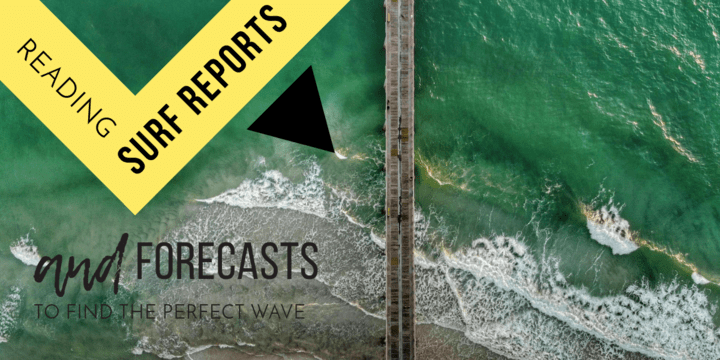If you want to know what the surf will be like at your favorite spot tomorrow, or the next day, or even next week, you will need to learn the art and science of interpreting surf forecasts, weather reports and maybe even raw buoy data. Staying tuned to various sources that address your nearest stretch of coastline, you will need to gather precise information on tides and wind conditions, as well as the direction, height, and wave-interval of each rising groundswell. Then you will want to compare all of these variables to the ideal conditions at your favorite surf spots to see where you can find a match.
TIDES
Tides are one of the most influential variables impacting wave quality. Many reef breaks and point breaks, for example, are highly tide-dependent, and may only deliver rideable waves for a few hours each day when the tide is right. On the other hand, some beach breaks may provide rideable waves all day with any tide. So it’s essential to learn the precise tide-dependency of your favorite breaks as a first step toward predicting when they will be at their best.
WIND SPEED AND DIRECTION
When it comes to sculpting the perfect wave, wind strength and direction are as crucial as the tides. However, they are far more difficult to predict with precision. Nonetheless, surf forecasts and local weather reports can give you a relatively good idea of what to expect for wind conditions on your favorite stretch of coastline. Then you can translate the wind direction into offshore or onshore concerning your favorite surf spots. Roughly speaking, offshore breezes will increase wave intensity, while coastal breezes will decrease it. However, once breezes become strong winds and gusts, they will produce foam and chop regardless of their direction, and the spot will get “blown out.”
SWELL DIRECTION
No matter how big a groundswell is, if it’s coming in in the wrong direction for your favorite break, it will bypass it or merely give it a glancing blow. However, some breaks are more sensitive to swell direction than others. Therefore, it’s essential to learn what the precise swell-direction requirements are at your favorite spots to predict which incoming ground swells will deliver the goods.
SWELL HEIGHT AND INTERVAL
When listening to buoy reports from the National Weather Service or another source, pay close attention, not only to the height of the swells, but also to the time interval between them. Even if the swell height is just a few feet, if the time interval between swells is long, then you may have some severe surf on the way. The ideal swell for big wave surfers will have both: the tallest swells and the most extended intervals. But keep in mind that most surf spots aren’t big wave breaks, and will have a specific size-window that is ideal for them.
PUTTING IT ALL TOGETHER
Suppose that your favorite surf spot is a southwest-facing pointbreak that breaks best at a medium-low tide, but that gets quickly blown out. Further, suppose the pointbreak is located in a cove that begins to close out when wave faces reach eight to ten feet. In this case, you will want to remain vigilantly on the lookout for the ideal combination of a relatively windless day with a small to medium-sized ground swell approaching directly from the southwest. If this sounds like hard work, ask any seasoned surfer, and they’ll tell you: learning those ideal conditions is like learning a password that will unlock some of the best waves of your life.
















